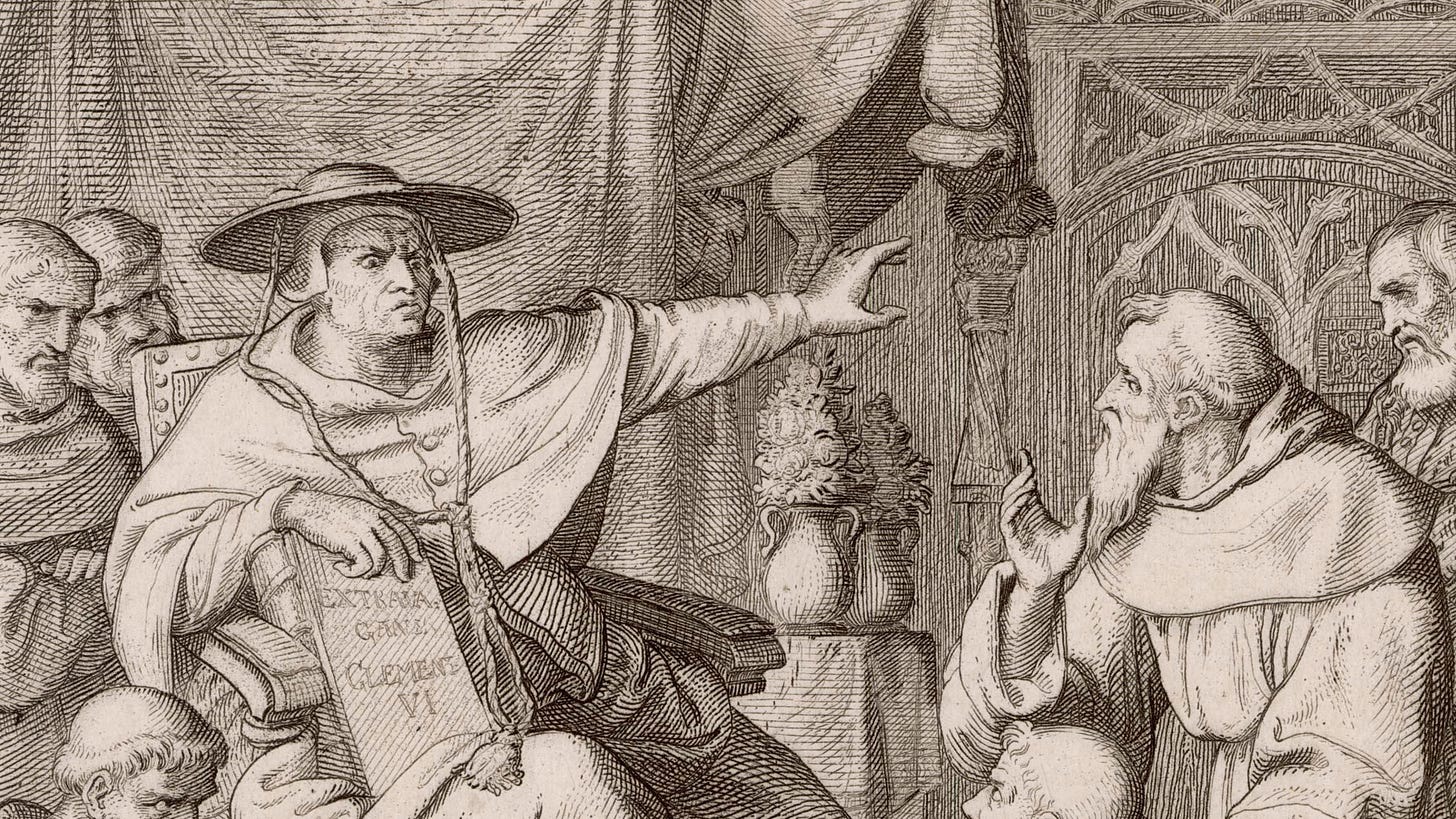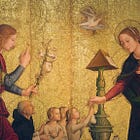How an evil pope could 'destroy the Church'—Cajetan's objections
Excluding the question of heresy from his discussion, Cajetan considers whether other reasons might justify deposing a pope.

Excluding the question of heresy from his discussion, Cajetan considers whether other reasons might justify deposing a pope.
Editor’s Notes
The following text is from the scholastic theologian Cardinal Thomas de Vio Cajetan OP (1469—1534).
Cajetan was a famous commentator on St Thomas Aquinas and an influential theologian.
In his brief discussion on the possibility of a pope who tries to destroy the Church, Bellarmine refers readers to two specific treatments from Cardinal Torquemada and from Cardinal Cajetan.
Bellarmine refers readers to Chapter 27 of Cajetan’s treatise on the authority of pope and council, which we shall provide in due course. This present text is that of Chapter 24, in which Cajetan sets out the objections to be answered in Chapter 27.
Although these texts from Bellarmine—as well as Cajetan and Torquemada—have been presented to justify…
The possibility of a pope trying to destroy the Church through the profession and teaching of heresy and promulgation of evil laws, namely within the legitimate sphere of his authority
The continuing legitimacy of such a pope
The necessity of resisting this pope within this legitimate sphere of his authority.
However, this is not borne out in the particular texts, let alone in the immediate context of Bellarmine’s work.
As further proof of this, we are considering the texts to which Bellarmine points his readers—both of which are explicitly excluding doctrinal questions and that of a heretic pope, and considering issues such as simony, nepotism and profligacy.
Evil popes vs heretic popes
In fact, Bellarmine’s texts are dealing with an entirely different situation, namely a wicked, tyrannical or evil pope. As such, they cannot be taken as evidence that a true pope can destroy the Church doctrinally and in her laws whilst retaining office.
This is evident from Bellarmine’s own work, but it is also evident in the texts which he cites—including the below.
It does not include the teaching of heresy and error, the promulgation of evil laws and liturgy, or the imposition of a new religion.
Conclusion
It is well known that Cajetan was an advocate for the “fourth opinion”—namely, that a heretic pope should be deposed—and roundly refuted by St Robert Bellarmine in his chapter on the pope heretic question. That said, Cajetan seems to have later adopted the second opinion later in life.
Regardless, the key point of this text is that it provides an illustration of what Bellarmine had in mind, when writing his “resistance quotes.” He did not have in mind a heretic pope, or one whose attempts to destroy the Church involved imposing his heresy on the Church, or promulgating laws that run counter to the faith. As Bellarmine wrote elsewhere:
[T]he Pontiff is the shepherd and teacher of the whole Church; therefore, the whole Church is bound to hear him and to follow him; therefore, if he errs, the whole Church will err. [Therefore, he cannot err, at least as a public teacher.]1
As Chapter 24 presents objections, and as we are presenting it by way of context for Chapter 27, the following text should not be taken as a statement of doctrinal principles.
See also Torquemada here:



